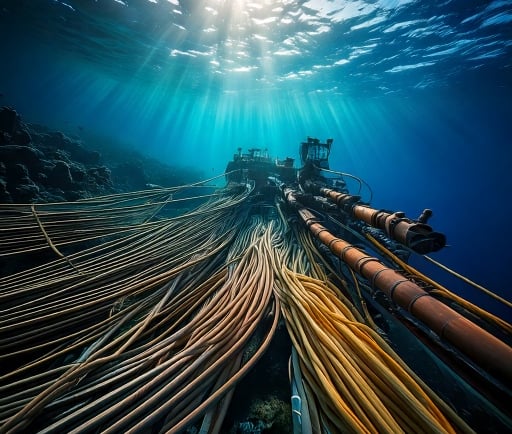The Backbone of Global Connectivity: Undersea Cables and Fiber Optics


Introduction to Undersea Cables
In the modern digital age, the vast majority of our internet data is transmitted through an intricate network of undersea cables. These cables, often stretching thousands of miles along the ocean floor, form the backbone of global connectivity, enabling communication and information exchange across continents. Approximately 99 percent of international data travels through these fiber optic cables, making them essential to our daily lives.
The Role of Fiber Optics
Fiber optics technology has revolutionized data transmission, providing high-speed communication that is crucial for our interconnected world. Undersea cables utilize fiber optic strands, which can carry vast amounts of data at the speed of light. This technology not only enhances internet speeds but also ensures more reliable connectivity between nations. With the expansion of cloud computing, streaming services, and digital communications, the demand for data transfer capacity has surged, making undersea cables increasingly vital.
Infrastructure and Challenges
Constructing and maintaining undersea cables is a formidable task that involves elaborate planning and significant investment. These cables are laid down on ocean floors, often facing challenges such as extreme depths, varying sea conditions, and potential damage from maritime activities or natural disasters. Despite these challenges, the installation of new cables continues to accelerate in response to the ever-growing demand for bandwidth. Companies invest heavily in upgrading existing systems and deploying new routes to enhance global data connectivity.
Environmental Considerations
While undersea cables are crucial for global communications, there are environmental considerations associated with their installation. The laying of cable can disrupt marine ecosystems, which raises questions about sustainable practices. However, advancements in technology aim to minimize environmental impact as companies and organizations strive to balance connectivity needs with ecological preservation.
Future of Undersea Cables
The future of undersea cables is bright, as innovations continue to emerge. With the increasing reliance on digital infrastructure, the role of fiber optics will undoubtedly expand. New technologies, including enhanced cable designs and construction methods, promise greater efficiency and durability. Additionally, as we venture into the era of 5G and beyond, undersea cables will play a pivotal role in supporting the next generation of internet services.
Conclusion
In summary, undersea cables and fiber optics form the bedrock of our global digital communication. The ongoing investment in this infrastructure highlights its importance in sustaining the massive flow of data that defines modern society. Continued innovation will ensure that undersea cables not only meet our current demands but also adapt to the future’s evolving needs, fostering a more connected world.
